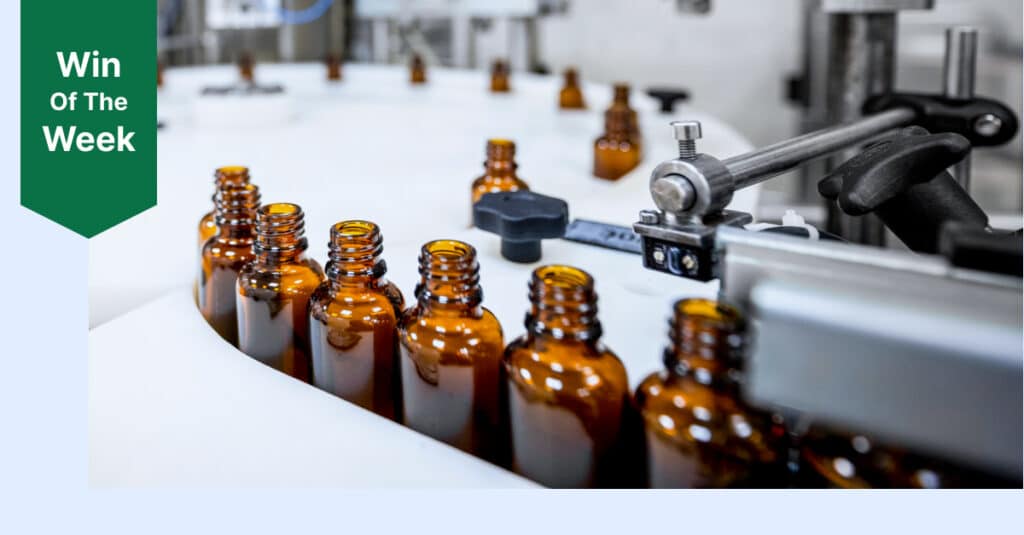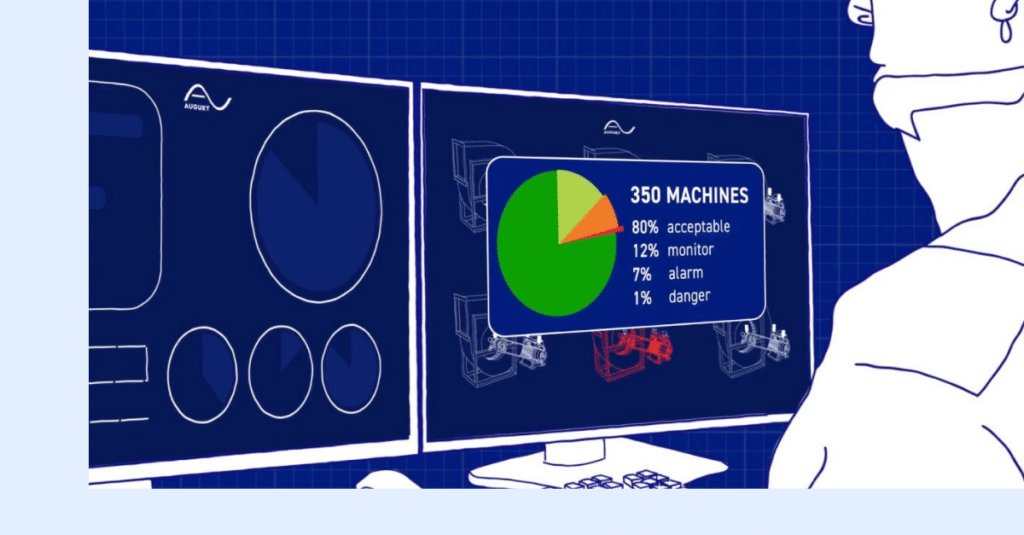
For a successful Machine Health solution, you need 5 capabilities. Each in themselves is a great step forward. But the real – and measurable – value is in how they interact and build on each other. In other words, you’re missing opportunities if you can’t leverage all 5. For part 3 of this blog series, we put a spotlight on how Reach at Global Scale fits in the big Machine Health picture.
“Reach at Global Scale is what it’s all about,” says James Newman, Head of Product and Portfolio Marketing at Augury. “Unless you are a single factory, you have to scale your machine health program across your whole business. So yes, you really need the other four machine health capabilities to be really up to speed to make this happen. This is the big leagues.”
Proof is in the Pudding: Proving it At Scale
“When it comes to scaling, don’t derive too much reassurance that it will be successful based on a small pilot program. As I always like to remind people: pilots on 20 or 30 machines are statistically insignificant,” says James.
C.A.R.E.S.: The Five Required Capabilities of Machine Health
C: Comprehensive Asset Coverage
A: AI: Accurate & Prescriptive
R: Reach At Global Scale
E: Engagement & Autonomy
S: Services End-To-End
“You need to be able to prove your capabilities in full factories, 2 times, 20 times, 40 times. And yes, you may have already had one full plant win. But this is usually your lighthouse plant – they’re probably already your best plant. They don’t need persuading to take on new technologies. They’re not your problem child, they’re your poster child. And this solution needs to work for your problem child as well.”
Again: You Can’t Do It Alone
“And Accurate and Prescriptive AI makes scaling possible. Sure, you can hire 400 people to look at all the data and try to figure it out. And people have actually tried and they failed miserably. They couldn’t reach scale or accuracy,” says James. ‘No one has the resources to set up their own full program. It’s not going to happen. You’ll be wasting your time.”
What is Reach at Global Scale?
True reach in industrial enterprises requires fast time to value, tangible and measurable operational improvement, and proven ability to scale across the complete portfolio of sites.
“It really doesn’t make sense,” says Christian Smith, the Manager for Reliability Operations at Augury. “If you think about a route-based program, or a program that’s utilizing inhouse VAs, they will need to hire VAs for every site who will spend half their time just collecting data – data they ultimately won’t have time to review properly. Because only a small percentage of it is going to have issues. So, there will be a lot of wasted time collecting data.”
“The alternative is opting for 24-7 sensors, where the data gets reviewed by algorithms and external VAs before any relevant insights are shared. You’ll only be able to scale with this sort of proper machine health solution,” says Christian. “Plus, it only gets cheaper as you go from site to site. And as you gain more insights into your machines, and eventually perhaps loop in whole new data sets, you can continually automate more processes.”
“The best sign for a machine health company is when a company asks you to go global. And then you are equipped to do what they ask for – to scale along with their ambitions once they are sold on the value you deliver.”
Built to Scale
“You need to be working with a platform developed from the bottom-up to enable scale: one that’s built to benefit people at all levels of the organization – corporate, regional manager, VP, plant manager, maintenance person,” says Ryan Delaney, the Manager of Reliability Success Team at Augury. “When we’re talking about global scale, that’s a lot of different people that are needing to interact with a platform and gain benefits from it. You need a focused yet flexible platform that’s able to give the right information to the right people.”
“But don’t trust the company that just claims they’ve hit global scale with 25 customers in 25 countries,” says James. “That’s global deployment, not global scale. I would say a better measure of success would be having 5 customers each deployed across 25 countries. The best sign for a machine health company is when a company asks you to go global. And then you are equipped to do what they ask for – to scale along with their ambitions once they are sold on the value you deliver.”
One System, One Company
“If you’re a global beverage manufacturer, you make drinks in a very similar way all around the world,” says Brielle Fragale, Head of Customer Success at Augury. “However, the way those machines are maintained is different all across the world. This is why you need a single system that can be shared across all your facilities when you scale. You can start sharing insights and best practices based on shared data.”
“What I always like to say is vibration analysis and prescriptive maintenance both really work in terms of value,” says Ryan. “These are proven entities. Now, it’s more about maximizing the potential and executing it in a way that it can be streamlined across many different facilities in a uniform way – sharing the wins.”
Thank you for reading the ‘5 Machine Health Capabilities and Their Interactions’ series. It’s a big one :).
Reach out if you want to learn more about how these work with Augury’s machine health solution. And if you missed any installments, here are the other four parts:
1) Comprehensive Asset Coverage
2) Accurate & Prescriptive AI
4) Engagement & Autonomy
5) Services End-to-End




